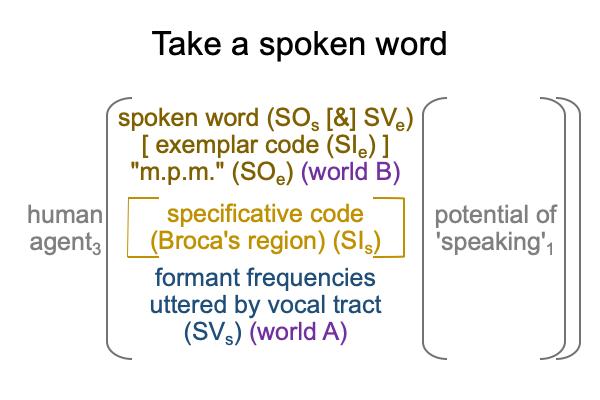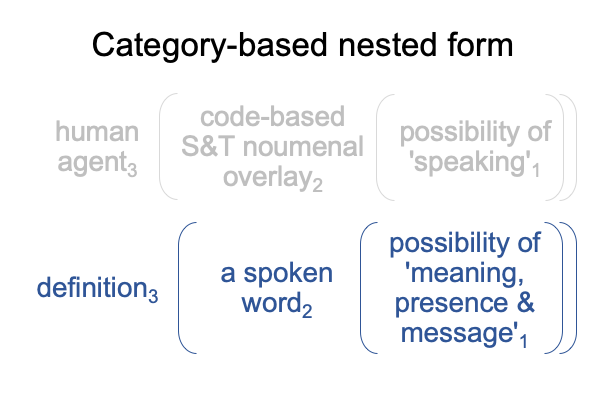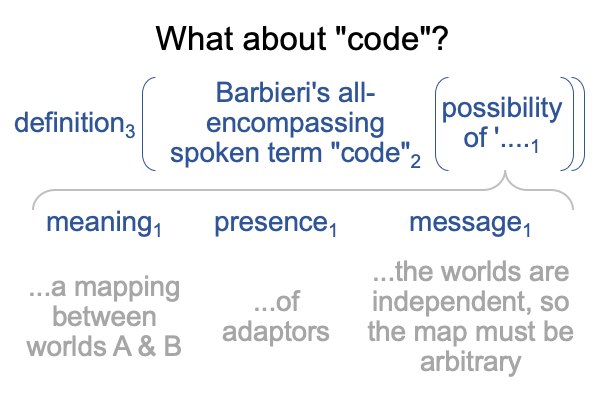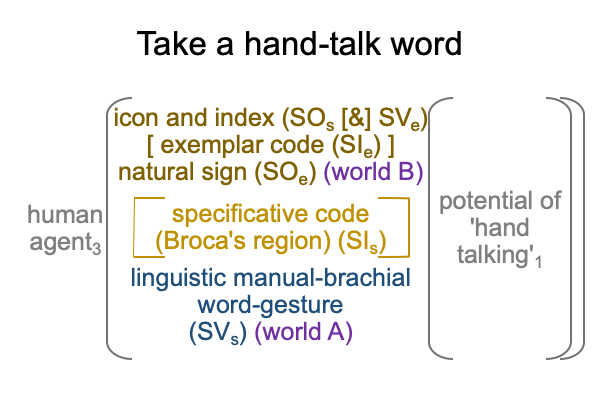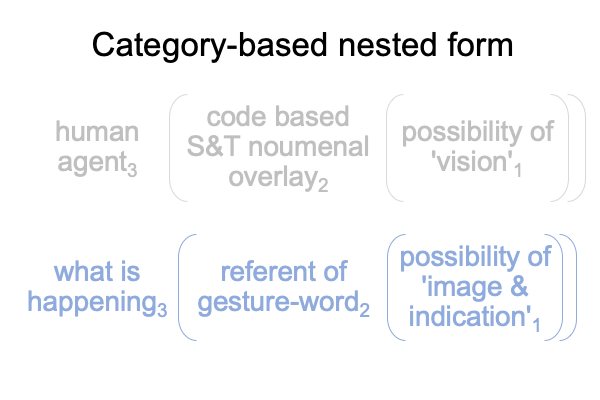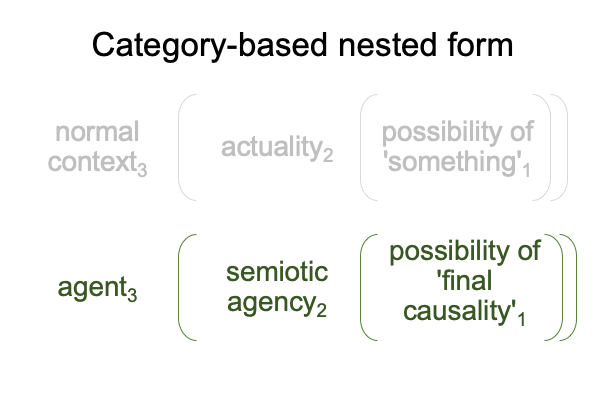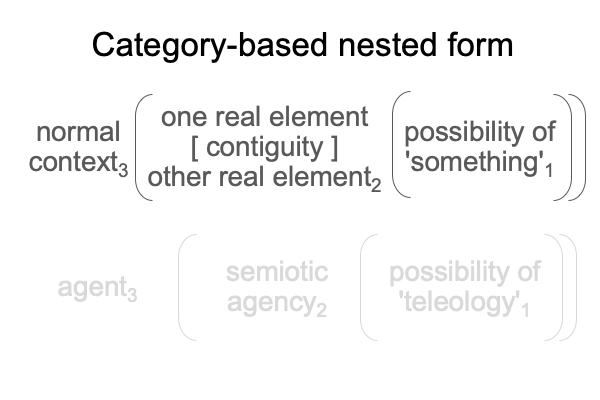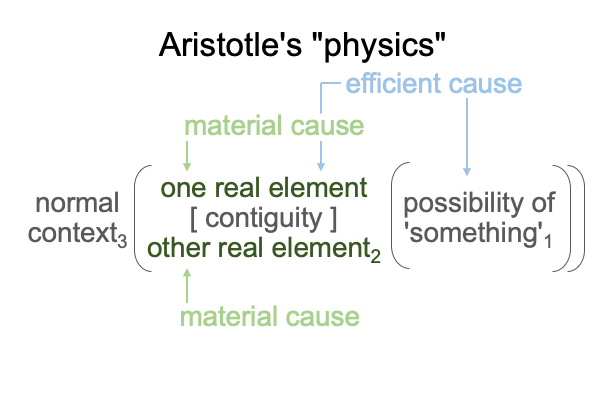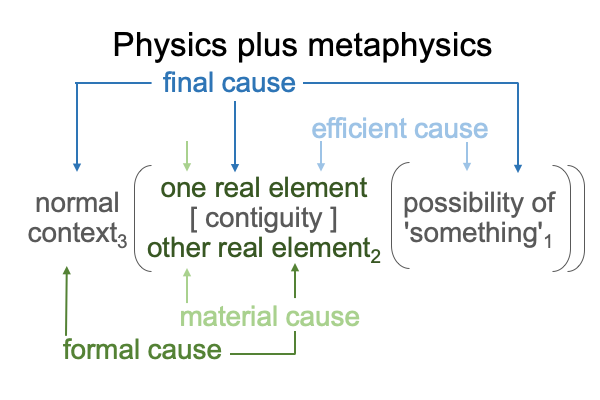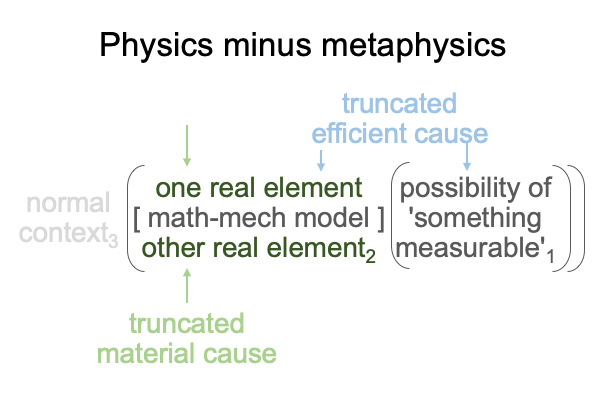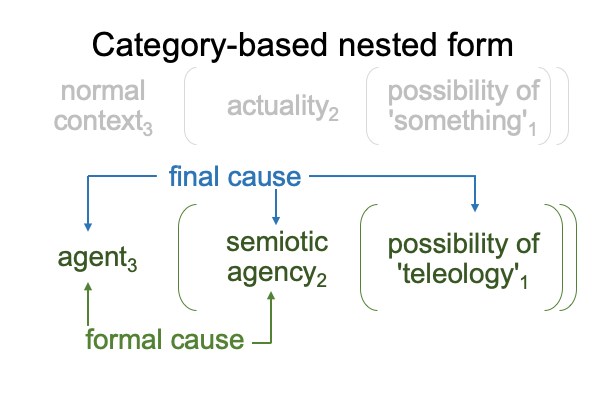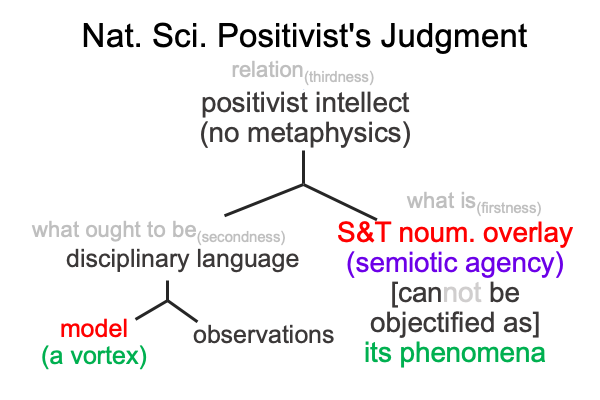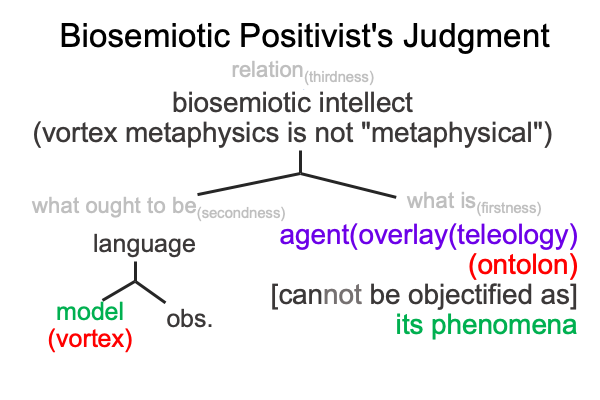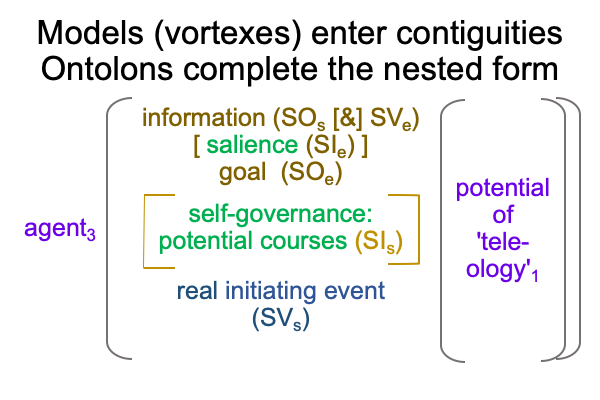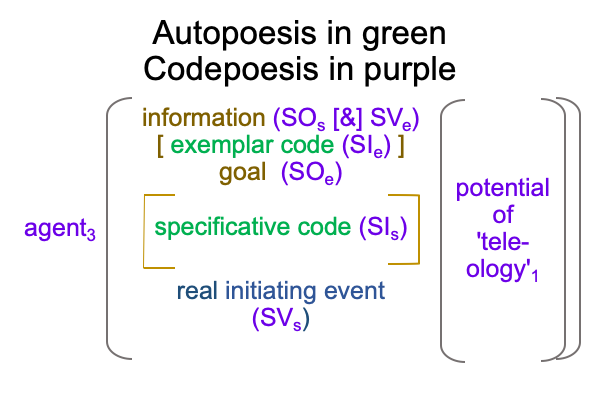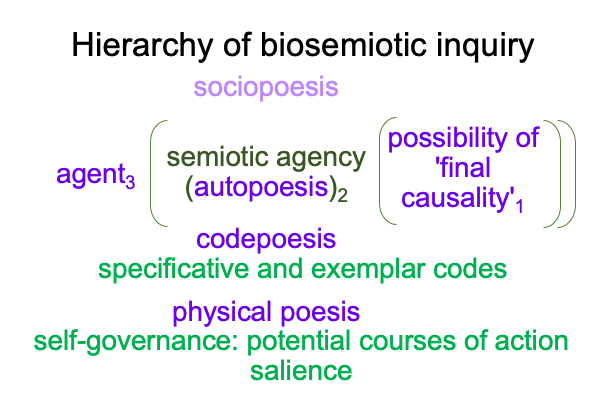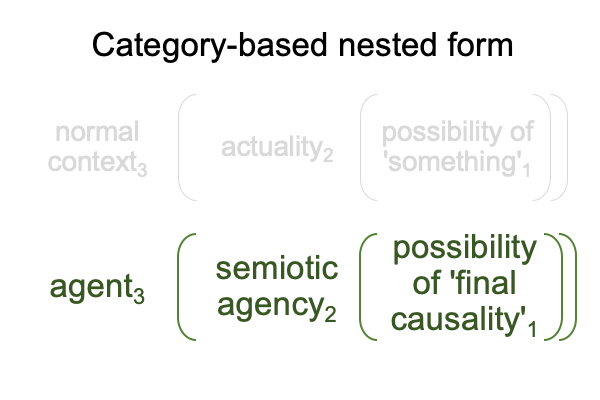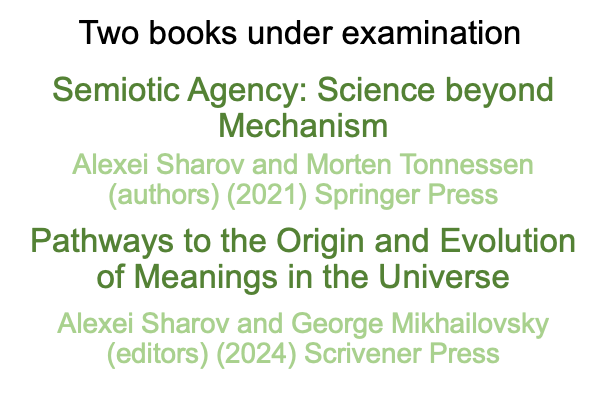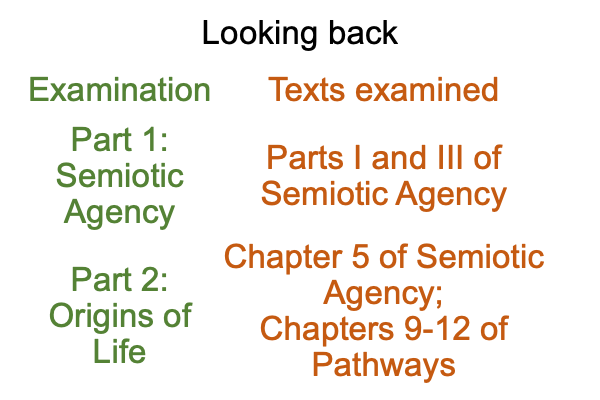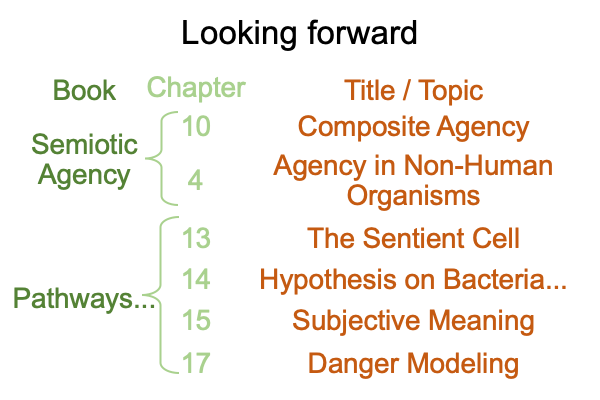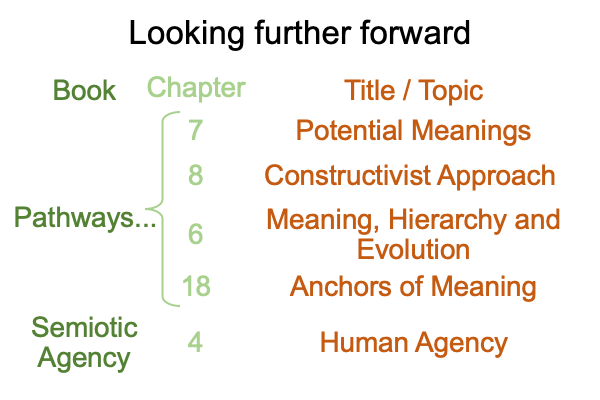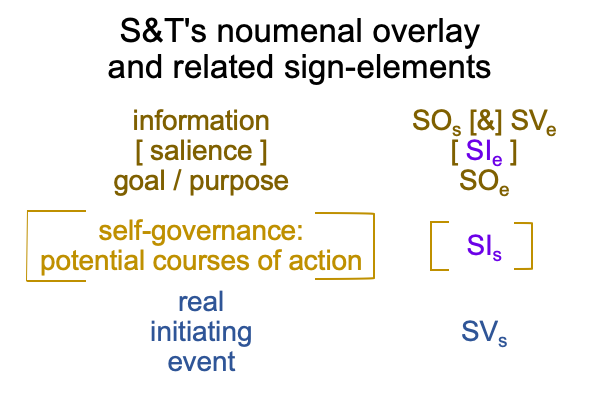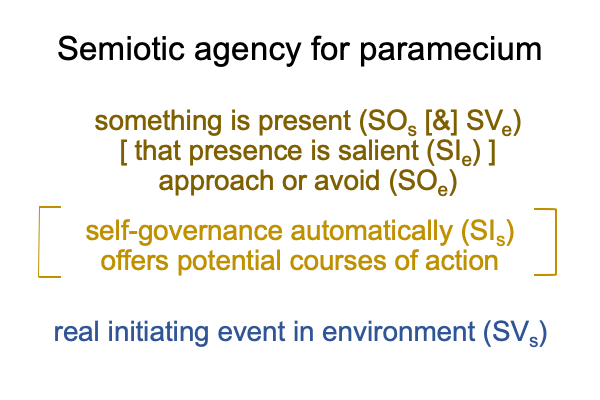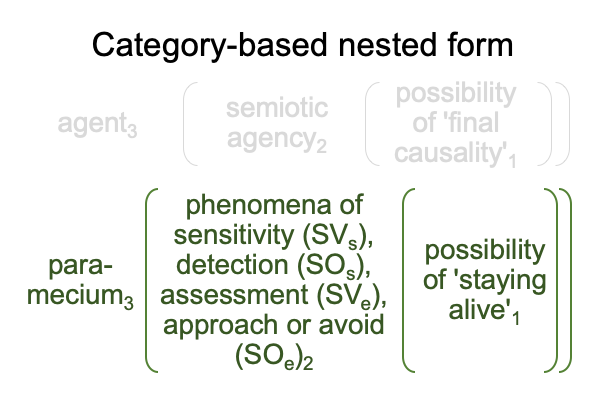Looking at Robert Prinz’s Chapter (2024) “Meaning Relies on Codes But Depends on Agents” (Part 3 of 5)
0416 Here is another way of looking at it.
The agent3 of semiotic agency2 is no longer the agent3 that was present originally. The new agent3 effectively games an established semiotic agency2 by changing its underlying signficance1. But, it is not an intentional change. It is more like a subtle change in landscape that eventually alters the course of a river.
0417 So, coded semiotic agency2 finds itself within the domain of a new agent3 and potential1 and the new domain is going to “game” the semiotic agency2.
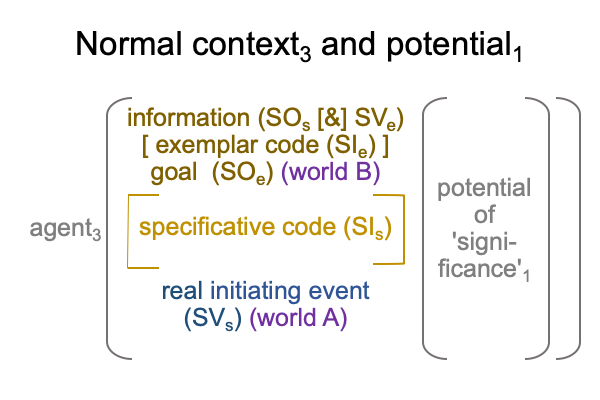
0418 Options?
Well, the original code can go out of business, to be replaced by semiotic agency2 from the new management3,1.
The original code can continue to operate irrespective of the semiotic agency2 that the new management3,1 is actualizing. In this case, the new management3,1 may use the original code as a functional component within a more comprehensive semiotic agency2.
The original code that manifests as a functional component within a more comprehensive semiotic agency2 may start to change, in response to its new normal context3 and potential1, through empedoclements.
0419 In short, modularity and hierarchy among semiotic agencies2 may also be regarded as modularity and hierarchy among agents3 and their significance1.
Thus, the title of Prinz’s chapter is accounted for.
0420 Section 11.4 lists topics in neural codes.
Section 11.5 raises the question as to whether meaning is in or from codes.
Section 11.6 wonders how interpretation delivers meaning.
These sections all flow from Barbieri’s insights into the all-encompassing nature of codes.
And, codes are all-encompassing because the Sharov and Tonnessen’s noumenal overlay is all-encompassing.
0421 For neural codes, consider a human agent who sees an object on a sunny day.
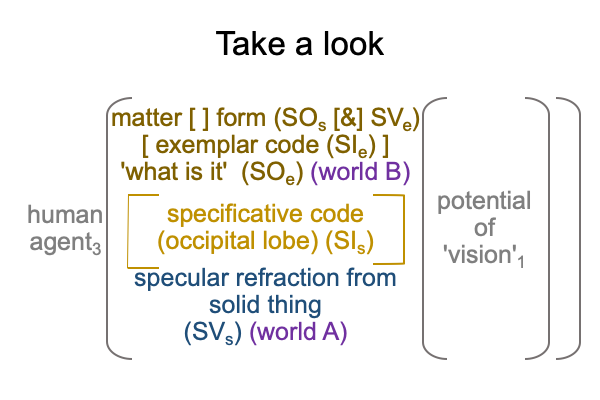
Specular reflection of photons from a solid thing (SVs) in the external world (A) stands for a thing with matter and form (SOs) in regards to the functioning of pattern-recognizing specifiers in my occipital lobe (SIs).
A thing with matter and form (SVe) stands for an exemplar of ‘what it is’ (SOe) in my world (B) according to specialized exemplar-recognizing modules outside of my occipital lobe (SIe).
0422 I can ask, “How do I experience this?”
I can ask, “What is happening?”
A juxtaposition between the category-based nested form containing semiotic agency2 and the content-level of the scholastic interscope for how humans think (appearing in Razie Mah’s blog for October, 2023, titled, Looking at John Deely’s Book (2010) “Semiotic Animal”) provides an interesting answer.
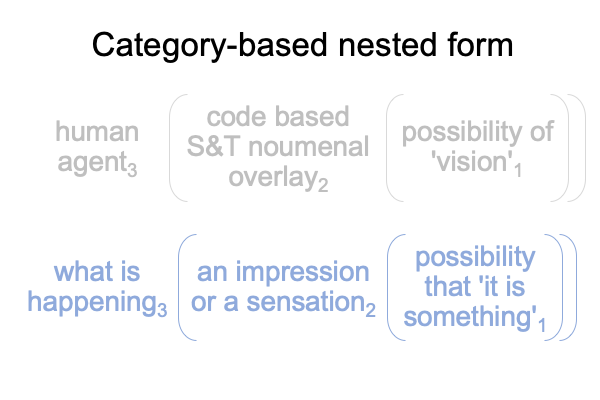
Does a comparison work?
0423 A human agent3 asks, “What is happening?”
What is happening3 is a content-level normal context3a.
It3a makes me wonder about the possibility that ‘something’ is happening1a.
A neural code-based S&T noumenal overlay2c presents an impression2a of an exemplar sign-object2c (SOe).
The potential of vision1a offers the possibility of identifying what it2a (SVs) is1a.
So, maybe, in the above figure, the entire lower nested form fits into the actuality2 of semiotic agency2.

